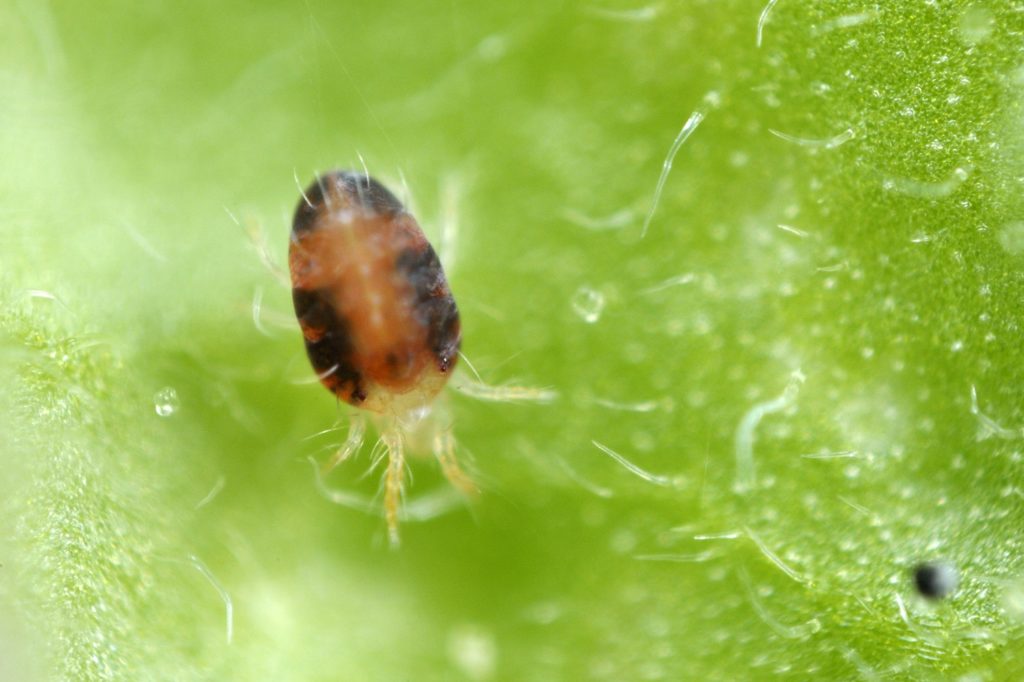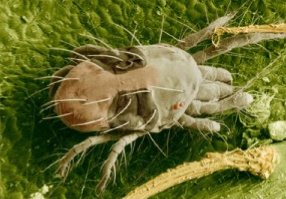What Are Spider Mites?

Aside from creepy, crawly, little critters that attack leaves. What are spider mites and why should you care?
Spider mites are small; really, really small. Female spider mites are usually only 1/50th of an inch long and males are even smaller. They are mere specks when seen crawling on the undersurface of leaves. The adult has eight legs and is usually pale green or amber/yellow. Under a microscope, they appear to have two (occasionally four) black spots. Young mites are six-legged. After two periods of molting and resting, they become adults and have eight legs. Generations may be completed in 5 to 40 days.
How do spider mites damage my trees and plants?
Spider mites feed by piercing the leaf surface and extracting leaf cells and fluid. What was once the plant’s protective, waterproof casing is now punctured with thousands of tiny holes. Your plants sense they are losing too much moisture all of a sudden and close their stomata – but it’s no use as the moisture is still being lost through the holes made by those evil critters! The injured leaves continue to become dehydrated and lose significantly more water. The effect snowballs as the plant’s ability to photosynthesize and repair itself diminishes through sustained attack. Leaves die and fall off. The plant becomes weaker and weaker until it eventually gives up the ghost. Major infestations show up quickly given the right conditions. Plants that looked healthy two days ago can suddenly be covered in fine spider webs.
How do I know if I have spider mites?
Leaves that have been attacked by spider mites are usually dry, brittle and discolored. Even a minor spider mite infestation can have a significant impact on a plant’s productivity. But it doesn’t stop there. The moisture stress caused by spider mite feeding actually makes the leaves taste better to the mites! Stressed leaves are sweeter and contain higher levels of soluble nitrogen. Both sugar and nitrogen are sought-after delicacies on the spider mites menu.

Spider mites are so tiny that they can float in on a breeze! They can therefore easily migrate from other plants that you may have in your house to your indoor garden. Mites will go dormant, even when pregnant. They will hitch a ride on your shoes and clothes and on your pets. Spider mites thrive in hot, dry conditions. Cooler, more humid conditions slow reproductive rates considerably. Outdoors, spider mites are active in the spring and go dormant over winter. The risk of spider mites is always greater if you live in a region that does not freeze during the winter. This makes Delmarva prime real estate for these creatures.
Our Arborists can check to see if you have this pest and have treatment options available. Think you might have a spider mite infestation? Contact us today!

